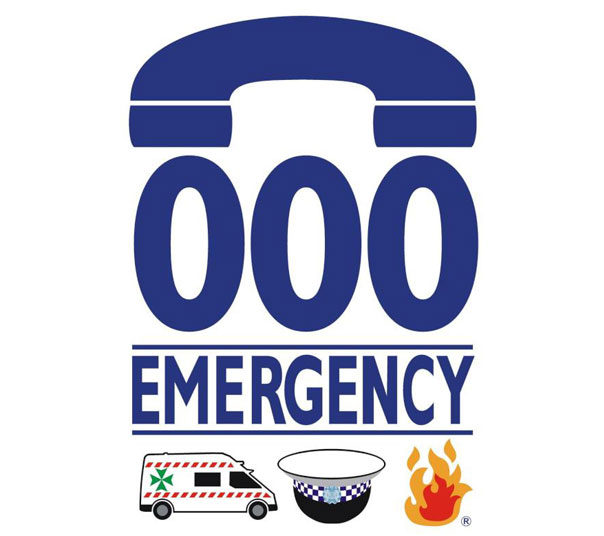Assess the Situation and Seek Assistance from Emergency Response Services Where Required
Once you have carried out the DR or the DRSABCD and you have assessed the injured then the next step is to seek assistance from emergency response services (where required).
Getting help
Triple Zero (000) is Australia's primary emergency call service number and should be used to access emergency assistance from all telephones (landline, mobile phones and payphones) in the first instance.
Alternative ways to call for help '112' is the GSM standard emergency call service number for use with GSM mobile phones and offers special access features.
 112 can also be dialed from other mobile phones, but will only offer the same features that dialing Triple Zero (000) provides. The 112 system can be dialed from anywhere in the world with GSM coverage and is then automatically translated to that country's emergency number.
112 can also be dialed from other mobile phones, but will only offer the same features that dialing Triple Zero (000) provides. The 112 system can be dialed from anywhere in the world with GSM coverage and is then automatically translated to that country's emergency number.
112 can also be dialed in any network coverage area (for example, in Australia, it could be dialed on an Optus mobile that is out of coverage and be connected to the emergency number by Vodafone where there is coverage) even without the presence of a SIM card or having the PIN number for the phone.
'106' is the text-based emergency call service for people who are deaf or have a hearing or speech impairment. This service operates using a TTY (teletypewriter) and does not accept voice calls or SMS messages.
Both 112 and 106 are secondary emergency call services numbers because they are for use only in relation to particular technologies.
In a workplace there may be an internal number to call in an emergency and this should be clearly displayed on or around the telephone.
Freeways and major roads have emergency phones marked by blue signs and with an arrow to point you in the direction of the nearest phone. These are linked to control centres, allowing them to pinpoint your position and get help to you quickly.
There are many other methods of calling for help that can be considered when a telephone is not available.
These include:
- Satellite phones
- UHF/VHF radio (channel ( for 27 MHz and channel 5 for UHF are the emergency channels)
- Two way radio
If you are attending to a casualty, have a bystander telephone for help. If you are on your own, you may have to leave the casualty for a short time to make a call. The specific circumstance surrounding the incident will dictate whether you call for help or whether you send a bystander.
You should instruct the bystander to give some basic information to the operator. Get them to repeat it back to you to ensure the information is correct. Memory lapse is a common experience in an emergency situation.
There are three important things to remember when calling for help:
- State which emergency service you want: Ambulance, Fire or Police.
- Stay on the line until connected with the emergency service operator as they will need to talk to you before sending assistance.
- Give as much information as possible about the location of the emergency. The information required will depend on whether you are in an urban or rural area and include:
- Exact address or location
- Street name and number
- Suburb, city/town
- Nearest cross road or street
- Landmarks and distance from landmark, intersection or roadside box/number
- Caller's name
- Phone number from where the call is being made
- What happened - e.g. car accident
- Number and condition of the casualties, including level of consciousness, breathing and circulation
DO NOT HANG UP UNTIL INSTRUCTED TO DO SO BY THE EMERGENCY OPERATOR
Make sure you keep the phone line free in case there is a need for the 000 operator to call you back.
Note: Where there is more than one casualty, the care of an unconscious casualty has priority